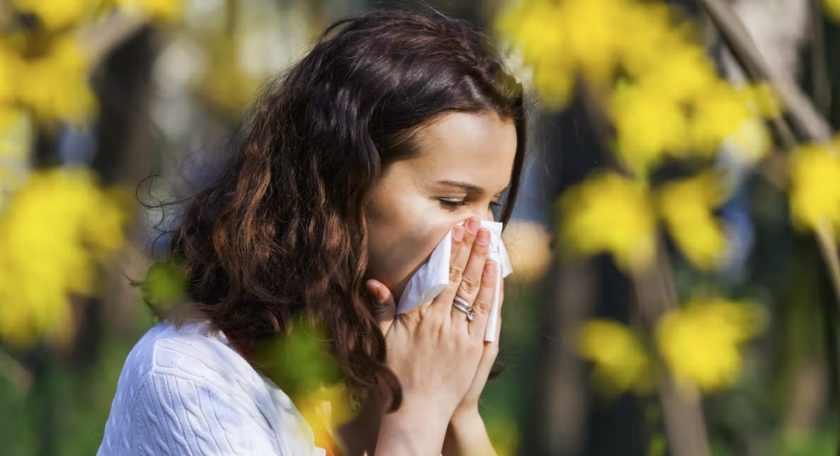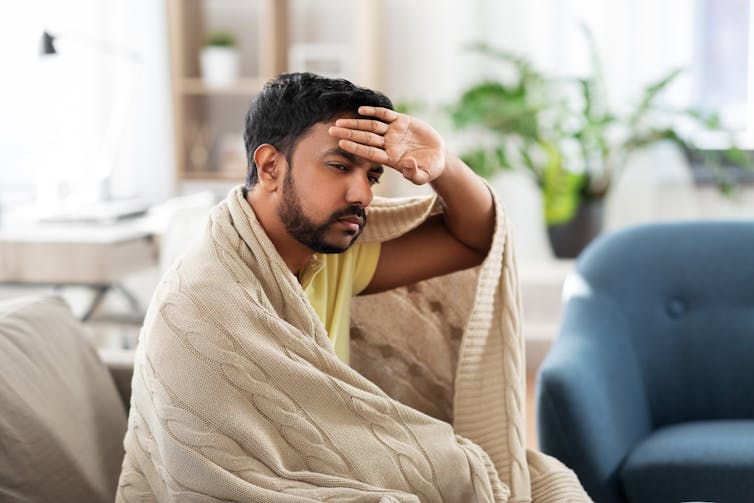Do I have COVID or hay fever? Here’s how to tell

The latest weekly infection survey figures published by Office for National Statistics (ONS) estimate the number of people testing positive for Covid-19 in Wales (week ending 25 July) was 108,800.
While the number of new infections in Wales is beginning to fall, the ONS data indicates around 1 in 30 people had the virus last week.
But in the summer months, millions of people suffer from hay fever, and there is a significant overlap between COVID and hay fever symptoms.
Samuel White, Senior Lecturer in Genetic Immunology, Nottingham Trent University and Philippe Wilson, Professor of One Health, Nottingham Trent University explain:
The overlap in symptoms could lead people to mistake COVID for allergies, in turn exacerbating the spread of COVID in the community.
Notably, we’re now often seeing milder COVID symptoms compared with earlier in the pandemic.
This is due to a combination of factors including increased immunity from vaccines and prior infections, and the evolution of new variants of the virus.
Of course, it’s a good thing that people generally aren’t getting as sick with COVID. At the same time, this could actually increase confusion between COVID and other illnesses or allergies.
The latest data from the UK’s ZOE app, which tracks people’s self-reported COVID symptoms, shows the most commonly reported symptoms of COVID are now a sore throat, followed by headache, cough, blocked nose and runny nose.
These symptoms can all affect people with pollen allergies. So it’s very possible someone might dismiss COVID as the onset of their usual allergies.
COVID symptoms vs hay fever symptoms
Although there are several overlapping symptoms, there are a few key symptoms that may help you distinguish between COVID and hay fever.
Itchy eyes: Itchy, red, watery or puffy eyes are a common sign of pollen allergies, but are not associated with COVID.
Fever or chills: A high temperature is not a sign of pollen allergies, but it’s a fairly common COVID symptom. So if you have a fever, in combination with other symptoms, you may have COVID or another respiratory infection.
Diarrhoea, vomiting and nausea: Diarrhoea in particular can be an early sign of COVID, starting on the first day of infection and often getting worse from there. It’s not associated with pollen allergies.
Muscle ache: COVID-related muscle pains can range from being mild to quite debilitating, especially when they occur alongside fatigue. Muscle aches and pains are not associated with pollen allergies.
Differences can also be seen within some symptoms of pollen allergies and COVID. For example, COVID-related coughing is commonly persistent and dry, whereas a cough associated with hay fever is more “tickly”, due to mucus from the nose presenting in the throat. Similarly, the loss of smell and taste in pollen allergies results from a blocked nose, so if you have this symptom without a blocked nose, it could be more likely to be COVID.

Ground Picture/Shutterstock
If your pollen allergy symptoms seem worse than usual, or you have one or more of the distinguishing symptoms above, it’s advisable to take a rapid COVID test.
Protecting yourself
Controlling allergy symptoms can help to prevent absences from work and school, and potentially facilitate earlier identification of COVID symptoms, in combination with testing. Further, although there’s no link between allergies and increased risk of COVID, pollen exposure can actually weaken the body’s immunity against COVID.
If you have a history of pollen allergies, make sure your treatment plan is current and that you have medications on hand for when you need them. Pollen exposure can be reduced by avoiding outdoor activities when the pollen count is high, keeping windows closed, changing clothes after being outside, and using an air purifier.
The best ways to prevent COVID infection continue to include vaccination, wearing appropriately-fitting face coverings, and physical distancing. If you’re looking for the best of both worlds, a particle filter mask can be protective against both pollen and COVID.![]()
This article is republished from The Conversation
Spotted something? Got a story? Email: [email protected]
Latest News
